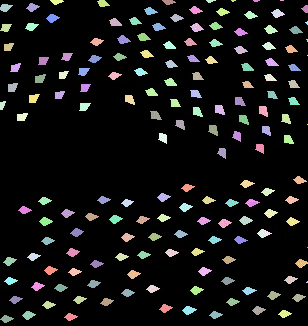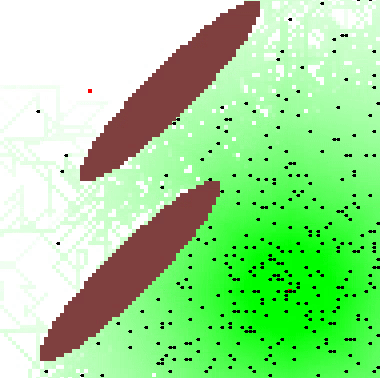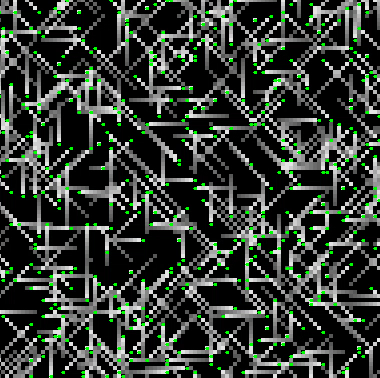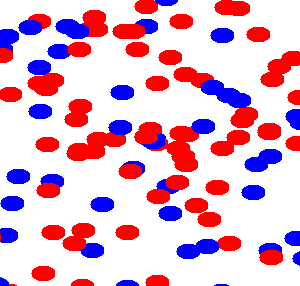-
Notifications
You must be signed in to change notification settings - Fork 7
Simulation Models
This section will describe the main simulation models used for testing DMASON.
A list of them is described below:
 #### Description
Boids is an artificial life program, developed by Craig Reynolds in 1986, which simulates the flocking behaviour of birds. The basic flocking model consists of three simple steering behaviors which describe how an individual boid maneuvers based on the positions and velocities its nearby flockmates.
##### Features
The model presents a good agents distribution on the field. In fact the agents make a few flocks which move on whole field making it computationally well balanced. Another feature of this model is the amount of work load for each agent, indeed each one must compute its direction in according to its neighbours, so for a high number of neighbours the the work load grows.
#### Description
Boids is an artificial life program, developed by Craig Reynolds in 1986, which simulates the flocking behaviour of birds. The basic flocking model consists of three simple steering behaviors which describe how an individual boid maneuvers based on the positions and velocities its nearby flockmates.
##### Features
The model presents a good agents distribution on the field. In fact the agents make a few flocks which move on whole field making it computationally well balanced. Another feature of this model is the amount of work load for each agent, indeed each one must compute its direction in according to its neighbours, so for a high number of neighbours the the work load grows.
 #### Description
#### Description
This is a simulation of artificial ants foraging from a nest, discovering a food source in the face of obstacles, and then establishing a trail between the nest and food source. The model uses two pheromones which set up gradients to the nest and to the food source respectively. The pheromones evaporate as well.
Unlike the others models, this is a unbalanced agents distribution example. Indeed each ant borns in a specific point on the field (home), then in distributed environment, this means that for a undefined number of steps the whole work load is provided to only a few LPs (or only one).

An example of 2D particles bouncing around on a grid. When particles intersect, they each choose a random direction to go (including staying put). Particles bounce off the wall and leave trails.
Unlike the flocking model, this is a simple case of random movement on a field. Each agent moves in a casual direction under the restriction which if two agents collide both the agents change direction. Hence each agent is concerned only in its position and not on the neighbourhood. The computational cost is bonded to amount of agents to be scheduled.

A simulation of intentional virus infection and disinfection in a population. The movement is based on wandering movement. Each agent moves following a invisible target in the field, which it changes over times. The bad guys (red) can infect a uninfected individual. Infected individuals (in green) may be disinfected by good guys (blue).
This model seems flockers, also here the agents are well distributed with the difference which the agent movement is not affected by neighbours and the work load is lower (the agent become sick or not).